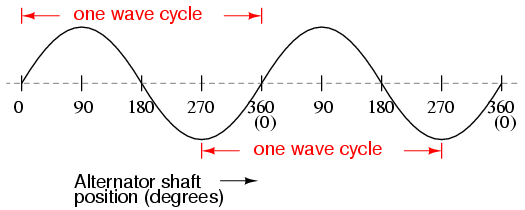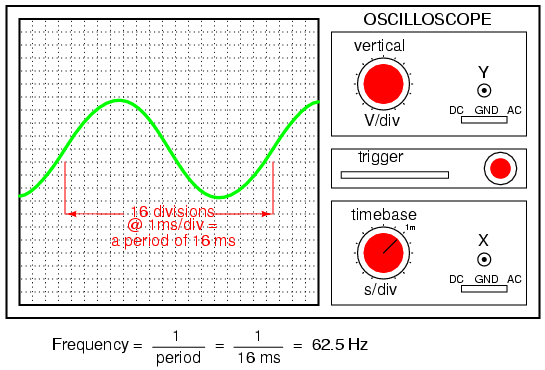সচারচর
আমরা কোনো কিছুতে শক্তি সঞ্চয় করতে কোনো বিদ্যুৎ উৎসের ও এর সাথে সংযোগ
স্থাপনকারী হিসেবে তার ব্যবহার করে থাকি। তবে তারের এই ঝামেলা থেকে মুক্তি
দেওয়ার এক নতুন পদ্ধতি আবিস্কারে সক্ষম হয়েছেন ডিউক বিশ্ববিদ্যালয়ের একদল
গবেষক। তারা এমন একটি যন্ত্র উদ্ভাবন করেছেন যা বিভিন্ন ক্ষুদ্র তরঙ্গ
দৈর্ঘ্যের শক্তিকে ডি.সি. কারেন্ট ভোল্টেজে রূপান্তর করতে পারে।
 সৌর বিদ্যুৎ কোষে যেমন আলোক শক্তিকে বিদ্যুৎ শক্তিতে পরিণত করা হয় এই
যন্ত্র ও নানা ক্ষুদ্র তরঙ্গ দৈর্ঘ্যের শক্তিকে বিদ্যুৎ শক্তিতে রূপান্তরিত
করে। গবেষকদের মতে এই যন্ত্র শক্তি উৎস যেমন উপগ্রহ সংক্রান্ত সংকেত, শব্দ
তরঙ্গ, ওয়াই-ফাই সংকেত থেকে শক্তি উৎপাদনে সক্ষম। এই শক্তি উৎপাদনকারী
যন্ত্রের আসল রহস্য লুকিয়ে আছে এর মধ্যে ব্যবহৃত পদার্থ ও গঠন কৌশলের মাঝে।
এলেন হাউকিস [ইঞ্জিনিয়ারিং এ পড়াশোনারত একজন ছাত্র] ও আলেক্সজেন্ডার কাতকো
[প্রাক্তন ছাত্র] মিলে একটি বর্তনীর বিন্যাস গঠন করেন। তারা ৫ টি ফাইবার
গ্লাস [যা তাপ নিরোধক,বস্ত্র শিল্পেও ব্যবহৃত হয়ে থাকে] এর একটি সারি ও
শক্তিশালী তামার পাতকে তার দিয়ে একসাথে জুড়ে একটি সার্কিট বোর্ডের উপর
স্থাপন করেন। যা আশপাশের ক্ষুদ্র তরঙ্গ দৈর্ঘ্যের শক্তিএ ৭.৩ ভোল্টের
বিদ্যুৎ শক্তিতে পরিণত করে। ইউনিভার্সাল সিরিয়াল বাস [USB] ছোটখাট
বৈদ্যুতিক যন্ত্রপাতিতে ৫ ভোল্ট শক্তি দিতে সক্ষম। যেখানে এই যন্ত্র থেকে
৭.৩ ভোল্টেজের শক্তি পাওয়া সম্ভব।
সৌর বিদ্যুৎ কোষে যেমন আলোক শক্তিকে বিদ্যুৎ শক্তিতে পরিণত করা হয় এই
যন্ত্র ও নানা ক্ষুদ্র তরঙ্গ দৈর্ঘ্যের শক্তিকে বিদ্যুৎ শক্তিতে রূপান্তরিত
করে। গবেষকদের মতে এই যন্ত্র শক্তি উৎস যেমন উপগ্রহ সংক্রান্ত সংকেত, শব্দ
তরঙ্গ, ওয়াই-ফাই সংকেত থেকে শক্তি উৎপাদনে সক্ষম। এই শক্তি উৎপাদনকারী
যন্ত্রের আসল রহস্য লুকিয়ে আছে এর মধ্যে ব্যবহৃত পদার্থ ও গঠন কৌশলের মাঝে।
এলেন হাউকিস [ইঞ্জিনিয়ারিং এ পড়াশোনারত একজন ছাত্র] ও আলেক্সজেন্ডার কাতকো
[প্রাক্তন ছাত্র] মিলে একটি বর্তনীর বিন্যাস গঠন করেন। তারা ৫ টি ফাইবার
গ্লাস [যা তাপ নিরোধক,বস্ত্র শিল্পেও ব্যবহৃত হয়ে থাকে] এর একটি সারি ও
শক্তিশালী তামার পাতকে তার দিয়ে একসাথে জুড়ে একটি সার্কিট বোর্ডের উপর
স্থাপন করেন। যা আশপাশের ক্ষুদ্র তরঙ্গ দৈর্ঘ্যের শক্তিএ ৭.৩ ভোল্টের
বিদ্যুৎ শক্তিতে পরিণত করে। ইউনিভার্সাল সিরিয়াল বাস [USB] ছোটখাট
বৈদ্যুতিক যন্ত্রপাতিতে ৫ ভোল্ট শক্তি দিতে সক্ষম। যেখানে এই যন্ত্র থেকে
৭.৩ ভোল্টেজের শক্তি পাওয়া সম্ভব।
‘’এর মাধ্যমে সর্বোচ্চ পরিমাণ শক্তি উৎপাদনই আমাদের লক্ষ্য ছিল, আমরা এর থেকে প্রায় ৬ শতাংশ শক্তি পেতে সক্ষম হয়েছি। কিন্তু এর থেকে নাটকীয়ভাবে ৩৭ শতাংশ শক্তি উৎপাদনও আমরা করতে পেরেছি যা একটি সৌর কোষের শক্তির সমতুল্য’’ – এলেন। তাদের মতে এ প্রকল্পের মাধ্যমে বিভিন্ন কম্পন,শব্দ ও নানা ধরনের শক্তিকে অন্য শক্তিতে রূপান্তর করা সম্ভব। যদিও এখন পর্যন্ত মেটাম্যাটারিয়ালের ক্ষেত্রে অনেক কাজই তত্ত্বীয়ভাবে পরিচিত, এ প্রকল্পটি প্রমাণ করে যে শুধুমাত্র মেটাম্যাটারিয়ালের ছোট্ট একটি ব্যবহার দ্বারা কল্যাণমুখী কাজ সাধন করা সম্ভব। মেটাম্যাটারিয়ালকে যদি রুমের সিলিং এর আবরণ হিসেবে ব্যবহার করা যায় তবে এটি মুহূর্তের মধ্যেই কোনো হারিয়ে যাওয়া ওইয়াই-ফাই সংকেতকে পুনুরুদ্ধার করতে পারবে। এর আরেকটি ব্যবহারও আছে। ব্যবহৃত, হারানো শক্তিকে কোনো তারের সাহায্য ছাড়াই পুনুরুদ্ধার করা। মহাশূন্যে একাধিক অ্যান্টেনা যখন পরস্পরের কাছাকাছি আসে তখন তারা পরস্পরের কাজের উপর প্রভাব বিস্তার করে। কিন্তু এই প্রকল্পের মেটাম্যাটারিয়াল পরস্পরের কাজের উপর প্রভাব বিস্তার নয় বরং একত্রে কাজ করে।
গবেষকদের ধারণা যথাযথ পরিবর্তন সাধনের মাধ্যমে শক্তি উৎপাদনকারী এই মেটাম্যাটারিয়াল মোবাইল ফোনের মধ্যে ব্যবহার করা যেতে পারে। এতে করে ফোন ব্যবহার না করার সময় একে তারবিহীনভাবে চার্জিত করা সম্ভব। এর ফলে আপনি কোনো দুর্গম এলাকাতে কোনো বৈদ্যুতিক উৎস ও তার ছাড়াই ফোনের চার্জ দেওয়া সেরে নিতে পারবেন। এমনকি এর জন্য মোবাইল ফোনের কোনো টাওয়ারেরও দরকার হবে না। এই প্রকল্পের বিশেষত্ব হলো এখানে কম মূল্যবান ও সাধারণ উপাদানের মাধ্যমে তড়িৎ চুম্বকীয় শক্তি উৎপাদন করা হয়। এতে আরও ব্লক যুক্ত করার মাধ্যমে বেশি বিদ্যুৎ উৎপাদন করা সম্ভব।
 সৌর বিদ্যুৎ কোষে যেমন আলোক শক্তিকে বিদ্যুৎ শক্তিতে পরিণত করা হয় এই
যন্ত্র ও নানা ক্ষুদ্র তরঙ্গ দৈর্ঘ্যের শক্তিকে বিদ্যুৎ শক্তিতে রূপান্তরিত
করে। গবেষকদের মতে এই যন্ত্র শক্তি উৎস যেমন উপগ্রহ সংক্রান্ত সংকেত, শব্দ
তরঙ্গ, ওয়াই-ফাই সংকেত থেকে শক্তি উৎপাদনে সক্ষম। এই শক্তি উৎপাদনকারী
যন্ত্রের আসল রহস্য লুকিয়ে আছে এর মধ্যে ব্যবহৃত পদার্থ ও গঠন কৌশলের মাঝে।
এলেন হাউকিস [ইঞ্জিনিয়ারিং এ পড়াশোনারত একজন ছাত্র] ও আলেক্সজেন্ডার কাতকো
[প্রাক্তন ছাত্র] মিলে একটি বর্তনীর বিন্যাস গঠন করেন। তারা ৫ টি ফাইবার
গ্লাস [যা তাপ নিরোধক,বস্ত্র শিল্পেও ব্যবহৃত হয়ে থাকে] এর একটি সারি ও
শক্তিশালী তামার পাতকে তার দিয়ে একসাথে জুড়ে একটি সার্কিট বোর্ডের উপর
স্থাপন করেন। যা আশপাশের ক্ষুদ্র তরঙ্গ দৈর্ঘ্যের শক্তিএ ৭.৩ ভোল্টের
বিদ্যুৎ শক্তিতে পরিণত করে। ইউনিভার্সাল সিরিয়াল বাস [USB] ছোটখাট
বৈদ্যুতিক যন্ত্রপাতিতে ৫ ভোল্ট শক্তি দিতে সক্ষম। যেখানে এই যন্ত্র থেকে
৭.৩ ভোল্টেজের শক্তি পাওয়া সম্ভব।
সৌর বিদ্যুৎ কোষে যেমন আলোক শক্তিকে বিদ্যুৎ শক্তিতে পরিণত করা হয় এই
যন্ত্র ও নানা ক্ষুদ্র তরঙ্গ দৈর্ঘ্যের শক্তিকে বিদ্যুৎ শক্তিতে রূপান্তরিত
করে। গবেষকদের মতে এই যন্ত্র শক্তি উৎস যেমন উপগ্রহ সংক্রান্ত সংকেত, শব্দ
তরঙ্গ, ওয়াই-ফাই সংকেত থেকে শক্তি উৎপাদনে সক্ষম। এই শক্তি উৎপাদনকারী
যন্ত্রের আসল রহস্য লুকিয়ে আছে এর মধ্যে ব্যবহৃত পদার্থ ও গঠন কৌশলের মাঝে।
এলেন হাউকিস [ইঞ্জিনিয়ারিং এ পড়াশোনারত একজন ছাত্র] ও আলেক্সজেন্ডার কাতকো
[প্রাক্তন ছাত্র] মিলে একটি বর্তনীর বিন্যাস গঠন করেন। তারা ৫ টি ফাইবার
গ্লাস [যা তাপ নিরোধক,বস্ত্র শিল্পেও ব্যবহৃত হয়ে থাকে] এর একটি সারি ও
শক্তিশালী তামার পাতকে তার দিয়ে একসাথে জুড়ে একটি সার্কিট বোর্ডের উপর
স্থাপন করেন। যা আশপাশের ক্ষুদ্র তরঙ্গ দৈর্ঘ্যের শক্তিএ ৭.৩ ভোল্টের
বিদ্যুৎ শক্তিতে পরিণত করে। ইউনিভার্সাল সিরিয়াল বাস [USB] ছোটখাট
বৈদ্যুতিক যন্ত্রপাতিতে ৫ ভোল্ট শক্তি দিতে সক্ষম। যেখানে এই যন্ত্র থেকে
৭.৩ ভোল্টেজের শক্তি পাওয়া সম্ভব। ‘’এর মাধ্যমে সর্বোচ্চ পরিমাণ শক্তি উৎপাদনই আমাদের লক্ষ্য ছিল, আমরা এর থেকে প্রায় ৬ শতাংশ শক্তি পেতে সক্ষম হয়েছি। কিন্তু এর থেকে নাটকীয়ভাবে ৩৭ শতাংশ শক্তি উৎপাদনও আমরা করতে পেরেছি যা একটি সৌর কোষের শক্তির সমতুল্য’’ – এলেন। তাদের মতে এ প্রকল্পের মাধ্যমে বিভিন্ন কম্পন,শব্দ ও নানা ধরনের শক্তিকে অন্য শক্তিতে রূপান্তর করা সম্ভব। যদিও এখন পর্যন্ত মেটাম্যাটারিয়ালের ক্ষেত্রে অনেক কাজই তত্ত্বীয়ভাবে পরিচিত, এ প্রকল্পটি প্রমাণ করে যে শুধুমাত্র মেটাম্যাটারিয়ালের ছোট্ট একটি ব্যবহার দ্বারা কল্যাণমুখী কাজ সাধন করা সম্ভব। মেটাম্যাটারিয়ালকে যদি রুমের সিলিং এর আবরণ হিসেবে ব্যবহার করা যায় তবে এটি মুহূর্তের মধ্যেই কোনো হারিয়ে যাওয়া ওইয়াই-ফাই সংকেতকে পুনুরুদ্ধার করতে পারবে। এর আরেকটি ব্যবহারও আছে। ব্যবহৃত, হারানো শক্তিকে কোনো তারের সাহায্য ছাড়াই পুনুরুদ্ধার করা। মহাশূন্যে একাধিক অ্যান্টেনা যখন পরস্পরের কাছাকাছি আসে তখন তারা পরস্পরের কাজের উপর প্রভাব বিস্তার করে। কিন্তু এই প্রকল্পের মেটাম্যাটারিয়াল পরস্পরের কাজের উপর প্রভাব বিস্তার নয় বরং একত্রে কাজ করে।
গবেষকদের ধারণা যথাযথ পরিবর্তন সাধনের মাধ্যমে শক্তি উৎপাদনকারী এই মেটাম্যাটারিয়াল মোবাইল ফোনের মধ্যে ব্যবহার করা যেতে পারে। এতে করে ফোন ব্যবহার না করার সময় একে তারবিহীনভাবে চার্জিত করা সম্ভব। এর ফলে আপনি কোনো দুর্গম এলাকাতে কোনো বৈদ্যুতিক উৎস ও তার ছাড়াই ফোনের চার্জ দেওয়া সেরে নিতে পারবেন। এমনকি এর জন্য মোবাইল ফোনের কোনো টাওয়ারেরও দরকার হবে না। এই প্রকল্পের বিশেষত্ব হলো এখানে কম মূল্যবান ও সাধারণ উপাদানের মাধ্যমে তড়িৎ চুম্বকীয় শক্তি উৎপাদন করা হয়। এতে আরও ব্লক যুক্ত করার মাধ্যমে বেশি বিদ্যুৎ উৎপাদন করা সম্ভব।



















